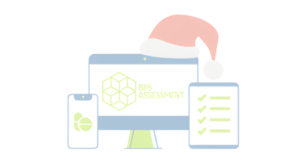Here are our 5 top tips to help you get prepared for your Prescribing Safety Assessment exam.
1. Understand the exam format and what’s expected of you
First thing’s first – get really familiar with the structure of the exam and understand what’s expected of you in each of the 8 sections of the PSA. For this, you’ll want to watch the free PSA Prep eLearning sessions, written by experts including the medical director of the PSA
The PSA Prep sessions are especially useful as they deep-dive into the exam format, looking at the layout of each question style, explaining how optimal and sub-optimal answers are marked, and addressing common challenges, like the time pressure and exam calculations.
There’s one session dedicated to each of the 8 sections of the PSA exam, as well as an introductory session. You can get instant access to these 9 free PSA Prep sessions here.
2. Get familiar with MedicinesComplete and the NICE BNF
We know that time pressure is reported to be the biggest challenge for candidates sitting the PSA, so you don’t want to lose valuable minutes trying to navigate your way around the BNF! Both MedicinesComplete and the NICE BNF are available in the exam (depending on your location), so it’s important that you familiarise yourself with both of these resources ahead of time. That way, you’ll be as efficient as possible in the exam itself.
3. Make good use of your PSA exam account
As soon as you’ve been registered for the exam, you’ll be able to login to your PSA platform account. Read up on the exam, use the information you’ll find there, and complete the practice papers included.
4. Practise, practise, practise
Once you’ve completed the practice papers included with your PSA account, consider broadening your revision materials and investing in more practice papers. You’ll find 3 bonus practice papers exclusively on the BPS Assessment Learner Portal.
These 3 papers offer 120 questions with unlimited practice attempts, so you really can ‘practise til perfect’. They include clear, in-depth feedback on each question style, so you can understand how to tackle the 8 different exam areas. Read through the feedback, assess your weakest areas, and keep on trying until you feel confident!
5. Time yourself!
As we’ve said before, the time pressure is reported to be the biggest challenge for PSA candidates. That’s because the exam simulates prescribing under pressure in the real world. So it’s really important that you understand what it feels like to try answering those 60 question items in 2 hours!
For that, you’ll need Practice Paper 3, which includes 60 question items and has 200 marks up for grabs, just like the real exam. Set your timer and see how you get on. You’ll soon work out where you’re losing time and which areas you need to focus on in order to make the best use of those 120 minutes (remember that the different sections of the exam are worth a different number of marks, so you should be spending more time on the sections with more marks).
If you’re worried about prioritising your time in the exam, watch the free PSA Prep sessions to understand more about how marks are allocated for each section of the exam before you time yourself with Practice Paper 3.
Finally… good luck!
As the learning and assessment branch of the British Pharmacological Society, we’re committed to helping you become a confident, capable prescriber – not just so that you can pass the PSA, but so that you can excel in whatever prescribing career path that follows. We hope that resources like PSA Prep and our Prescribing Practice Papers help you take control of your revision, so that you can approach exam day with confidence. We believe in you!





